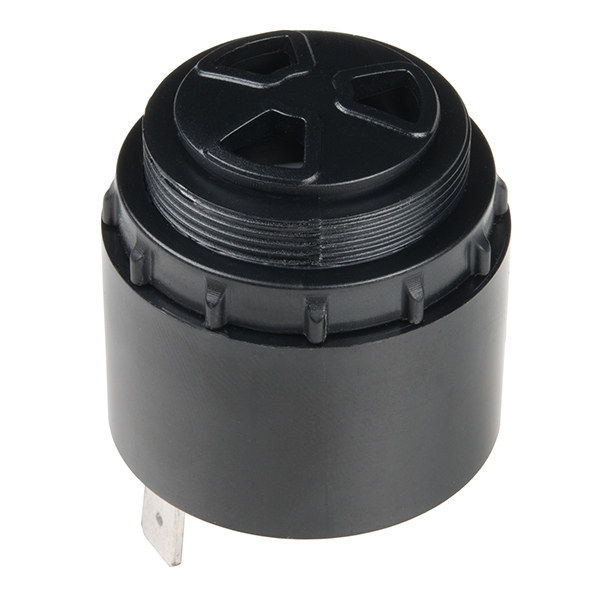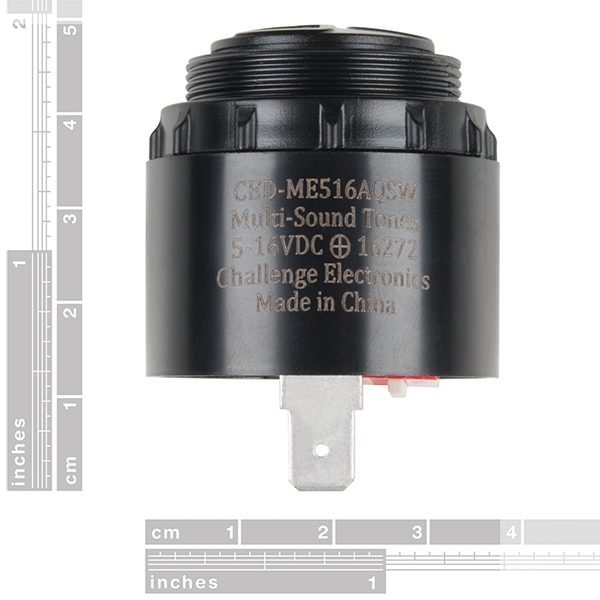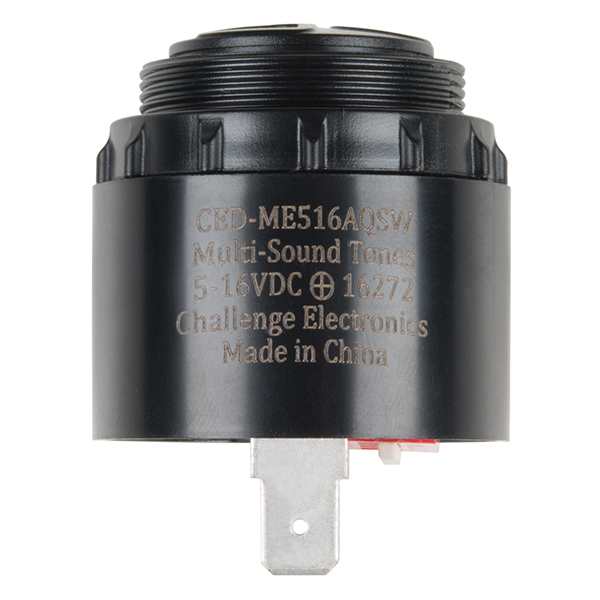This Piezo Alarm is a great option for when you need an audible alarm (or are just looking for a way to prank your friends). This alarm has 16 different output options that can be changed with the DIP switches on the unit. Select Continuous, Chime, Intermittent, Warble, or Pulsating and amaze your friends.
- Operating Voltage: 5-16Vdc
- Operating Frequency: 3KHz
- Warble Frequency: 2.8KHz to 3.2KHz
- Diameter: 35.8mm, Height 35.7mm
- 103 dB(A) at 16V at 61cm
- 90 dB(A) at 5V at 61cm
Large Piezo Alarm - 16 Tone Product Help and Resources
Core Skill: Soldering
This skill defines how difficult the soldering is on a particular product. It might be a couple simple solder joints, or require special reflow tools.
Skill Level: Rookie - The number of pins increases, and you will have to determine polarity of components and some of the components might be a bit trickier or close together. You might need solder wick or flux.
See all skill levels
Core Skill: Electrical Prototyping
If it requires power, you need to know how much, what all the pins do, and how to hook it up. You may need to reference datasheets, schematics, and know the ins and outs of electronics.
Skill Level: Rookie - You may be required to know a bit more about the component, such as orientation, or how to hook it up, in addition to power requirements. You will need to understand polarized components.
See all skill levels
Comments
Looking for answers to technical questions?
We welcome your comments and suggestions below. However, if you are looking for solutions to technical questions please see our Technical Assistance page.
Customer Reviews
4.3 out of 5
Based on 4 ratings:
1 of 1 found this helpful:
Loud & Easy to use.
This Alarm arrived fast and was very easy to use I was amazed at the volume, I would buy this again in a heartbeat.
Large piezo 16 sounds alarm buzzer
Very loud (can be dimmed), 16 very different tones! I am very happy with it.
Pretty neat device
It is so adjustable to so many different tones and sounds. It's also pretty loud for such a small device.
Simple loud siren
I needed a siren to beep whenever a door is opened. This is a little loud for that, but it could be covered to dampen the noise if needed. One interesting thing I found is I was able to run it on 3.3v and only draw 2ma. This allowed me to power it directly off an IO pin from an esp8266 module.





How hard do you think it would be to crack into that dip switch so that an Arduino Uno could control the tones ?
I am not sure but I think it would be easier to use a normal piezo buzzer and control the tones directly from the Arduino. You could use the tone(pin, frequency, duration) function to do so.
https://www.arduino.cc/en/Reference/Tone